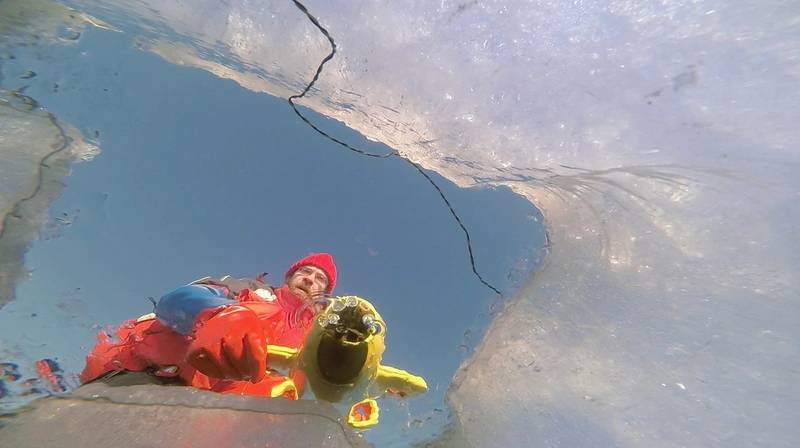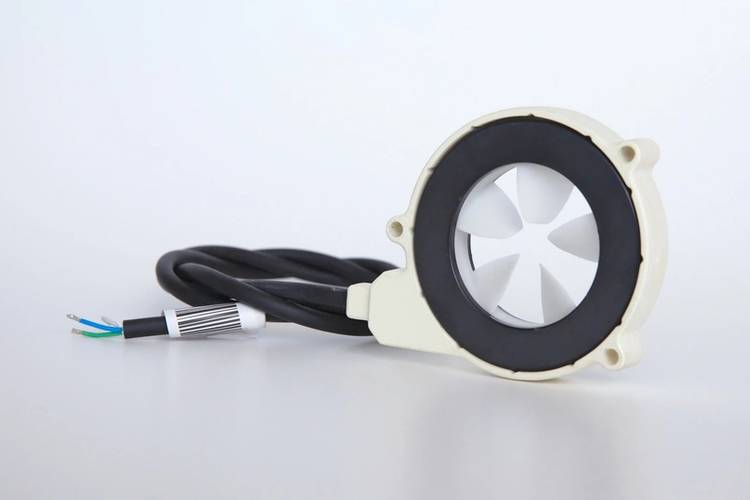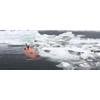Hydromea Moves Fast Forward on Subsea Robotics, Comms Tech
Born eight years ago, Hydromea is a dynamic and fast-growing Swiss-based subsea technology company that aims to help solve some of the subsea industry’s most vexing problems. Co-founder and CTO Felix Schill shares insights on the technical trends driving vehicle and communications tech development.
Founded in 2015, Hydromea recently celebrated its eighth year in business, and though still under a decade old, with 17 employees today the company has eight products in three different production lines. “The first is our disc drive thrusters, which are the thinnest rim driven thrusters in the world; we have two different models available,” said Schill. “We have a line of high-speed optical underwater communication devices called LUMA with five different models going from ultra-low power to very high bandwidth for live video streaming. And we just launched EXRAY, which is a wireless inspection ROV.”
Two Decades & Counting
While Hydromea was founded in 2015, its history stretches almost 20 years ago when Schill and Alexander Barr started PhD research on underwater swarm technology. “Back then, we looked at the key enabling technologies to have underwater swarms,” said Schill. “One of them is scalable communication between the robots because you would like to have 20, 30, 50 of these devices talking to each other.”
The other big tech hurdle is positioning, to ensure that the vehicles know where they are with respect to the others. “I did my PhD in underwater communication for swarms, and Alex did his PhD on distributed localization using acoustics,” said Schill.
The pair separated to pursue their individual academic projects, but a few years later met again in Switzerland at the EPFL University, mutually deciding that their work apart actually fit together, and moving together forward the pair envisioned their respective studied evolving into product for the subsea market. And do Hydromea was founded.
“Initially we developed Vertex, which was an AUV for environmental monitoring, which started off as an academic project within the university,” said Schill. “Then we spun that out into the company. In the meantime, we also developed the LUMA Optical Modems and the disc drive thrusters, which started off as a component on our AUV.”
With the vehicle created and now on display at trade shows, the company started getting inquiries on it, as well as on the individual components. “Eventually, we pivoted from the AUV to the inspection ROV space with EXRAY, which is a wireless inspection drone, which uses LUMA for the wireless video link,” said Schill. “You can actually get HD video in real time wirelessly through the water without needing the tether. That's something we just launched and are now pushing forward.”

Small size and smaller weight means users don’t need ships and cranes, rather devices that fit in a suitcase or a backpack. “We think that will open up a lot of new applications where, up to now, the cost was prohibitive,” said Felix Schill, CTO, Hydromea. “We really see the potential for a drone revolution like we've seen with aerial drones happening subsea."
From Idea to Prototype to Product … Quickly
Like many tech start-ups, Hydromea started small, with the trio of Schill, Barr, and eventually also Igor Martin, the company’s current CEO. As anyone at any tech start-up can attest, the mantra was ‘do everything ourselves’, from software, to the electronics, to building the hardware, machining, assembling, business development, and fundraising … the list goes on. “It was a lot on our plate, and I used to joke that we had more products than employees, but that has certainly changed,” said Schill. “The team has grown and things are going forward really well, but at the same time I think is this can-do attitude that we can build, develop and prototype everything in-house. We’re proud that we have a well-equipped workshop and the know-how to very quickly go from idea to prototype to product, because we can machine and 3D print and solder everything in our workshop, and also make the initial quantities for early adopters” before taking the product to a mainstream production line, which is outsourced. The ability to go from design to prototype to product in-house was particularly instrumental during the pandemic, when the supply chain was constrained.
Underwater Optical Comms
As is well understood, the big challenge underwater is that radio waves don't penetrate through water. “So, that means there is no GPS, there's no 3G, 4G, no Wi-Fi, and the industry has so far relied on acoustic communication, which works great for a lot of applications, but it has a big limitation in terms of bandwidth,” said Schill.
Lack of bandwith means you cannot get an HD video stream through acoustics, and also the latency is quite high, he said. Enter Hydromea’s underwater optical communication, which uses pulses of blue light, which according to Schill gives you the high bandwidth and very low latency. “It allows you to get a 10-megabit HD video stream in real time at very high quality to the operator, and also the control signals from the operator back to the drone with millisecond latency so that you don't have that lag while you control it,” said Schill.
A side effect of that high bandwidth is also a lot more power efficient. “Especially for battery powered devices, you can transmit a thousand times more data with the same energy that you need from the battery simply because it is so much faster,” said Schill. “That's a great benefit to equip battery powered sensors or other devices with optical modems, to allow low power data transfer and get the collected data out to the surface or to an ROV that can go and harvest the data.”
Schill and his team have seen a lot of the deployment for subsea sensors, such as gyro boxes or other devices which have to be monitored in real time during construction offshore.
 The Hydromea team. Photos courtesy Hydromea
The Hydromea team. Photos courtesy Hydromea
“Now they can get real time data feedback reliably and quickly,” said Schill. “For LUMA X, our flagship modem, we now see the effort to put these access points, you can think of it like WiFi access points for underwater, to put these on infrastructure as it is installed so that if an inspection ROV gets close to one of these assets, that it's essentially getting high speed data communication to get live video and live control, just like when you go into an airport or a café and you have Wi-Fi. So subsea, this will be like that: once you get to an asset that you want to inspect, you already have high speed communication available.”
Overall Schill, like many others in the space, have seen the ever-advancing miniaturization and immense computing power as drivers to shrink the equipment and make advances that were unfeasible 10-20 years ago.
Small size and smaller weight means users don’t need ships and cranes, rather devices that fit in a suitcase or a backpack. “We think that will open up a lot of new applications where, up to now, the cost was prohibitive,” said Schill. He points to the offshore industry, particularly the rapid acceleration of offshore wind, which is resulting in more structure going into the water than ever before, in a short window of time … infrastructure that has to be monitored and maintained. “We really see the potential for a drone revolution like we've seen with aerial drones happening subsea,” said Schill.
As a CTO of a fast-moving tech company, Schill is excited by the possibilities ahead.
“Our goal as a company is to turn all of our research ideas into usable products, to take it step-by-step and de-risk the new technologies as we go,” said Schill. “Now we've developed EXRAY as an inspection ROV for confined spaces, where we could demonstrate the wireless capabilities in a relatively controlled environment, like ballast water tanks or freshwater tanks on ships.
The next step that we are starting now is to take this into the open water domain by extending the capabilities of the vehicle into open water navigation, and then take the next steps from there into autonomy and essentially eliminating the need for surface vessels and pushing the automation forward to make maintenance and inspection an easy task that can be automated. And in the optical communication domain, of course, we are also pushing the boundary constantly going into multi node networks and extended capabilities, more speed, more range, of course. So, there will be a lot of new products coming out [of Hydromea] over the next years.”

























 August 2025
August 2025



